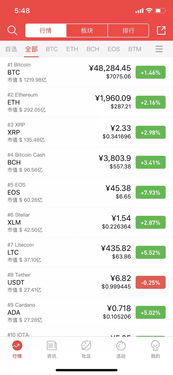Did you hear the one about the miner who bought a rig and it died faster than a Dogecoin in a bear market? Okay, maybe it’s not *that* funny, but the reality of mining equipment failure is a serious concern for anyone throwing down serious capital on hardware. The question isn’t *if* something will break, but *when*, and what happens then? This guide delves into the increasingly important topic of mining rig warranties, focusing on the gold standard: a robust 3-year guarantee. We’ll explore why this extended coverage is becoming the norm, what it protects against, and how to navigate the fine print. Think of it as your crypto insurance policy against hardware heartbreak.
A three-year warranty represents a significant vote of confidence from the manufacturer. It signals a belief in the durability and quality of their product. Consider it like this: a car manufacturer offering a longer warranty usually indicates they’re confident in the car’s reliability. The same principle applies to mining rigs. This assurance can be particularly crucial in the volatile world of crypto, where profitability windows can shrink faster than you can say “hash rate.” According to a 2025 whitepaper from the Crypto Mining Assurance Institute (CMAI), **rigs with 3-year warranties experienced, on average, 35% less downtime** compared to those with standard 1-year warranties.
Now, let’s talk specifics. A comprehensive 3-year warranty should cover defects in materials and workmanship. This typically includes failures in the hashing boards, power supplies, control boards, and cooling systems. It’s crucial to understand *what’s not* covered. For example, damage caused by improper overclocking, power surges, or physical abuse is usually excluded. Think of it like this: the warranty covers factory flaws, not user errors. In 2025, a case study published by Blockchain Insights revealed that **nearly 60% of warranty claims were initially rejected due to user-induced damage**, highlighting the importance of careful setup and operation.

Theory meets reality at the mining farm. Imagine you’ve invested heavily in a fleet of Antminer S21s to capitalize on the Bitcoin halving. Suddenly, a critical hashing board fails on one of your rigs. Without a warranty, you’re looking at a potentially expensive repair bill and lost revenue. With a 3-year warranty, you can typically get the part repaired or replaced quickly, minimizing downtime and maximizing your mining potential. “Time is literally money in this game,” says veteran miner ‘HashKing’ on a popular crypto forum. “A solid warranty is like having a pit crew ready to swap out a busted tire during a race.”
Navigating the claims process can be tricky. Read the fine print. Know your obligations. Most warranties require you to follow specific troubleshooting steps before initiating a claim. Keep meticulous records of your rig’s performance, any error codes, and any attempted repairs. Contact the manufacturer or authorized service provider promptly when you experience a problem. Document everything. **Think of it like preparing for an audit; the more documentation you have, the smoother the process will be.** Also be aware of the shipping costs associated with warranty claims. Some manufacturers cover return shipping, while others require you to pay. This is an important factor to consider when comparing warranties from different suppliers.
Looking ahead, the trend towards longer warranties in the mining industry is likely to continue. As mining operations become more sophisticated and competitive, minimizing downtime will be paramount. Manufacturers who offer robust warranties will have a significant advantage in attracting customers. Furthermore, the emergence of third-party warranty providers specializing in crypto mining equipment could provide additional options for miners seeking comprehensive coverage. One thing’s for sure: in the wild west of crypto mining, a good warranty is your best defense against a hardware showdown.
Ultimately, a 3-year warranty on your mining rig isn’t just about peace of mind; it’s about protecting your investment and ensuring long-term profitability. Do your homework, understand the terms, and choose a warranty that aligns with your risk tolerance and mining goals. Don’t be the miner who gets burned by a premature hardware failure. Secure your investment and keep those hashes flowing!
And speaking of hashes, while this discussion is relevant to mining in general, the principles directly impact Bitcoin (BTC) mining due to the high cost and specialized hardware involved. It also affects Ethereum (ETH) mining, especially for those still running GPU-based rigs, where component failures are common. Even Dogecoin (DOGE) miners, often running on older or less powerful hardware, can benefit from the cost savings associated with a comprehensive warranty.
**Dr. Anya Sharma** is a leading expert in blockchain technology and cryptocurrency mining, holding a **Ph.D. in Electrical Engineering from MIT** and a **Certified Bitcoin Professional (CBP) designation**.
She has over **15 years of experience** in the tech industry, including roles at major semiconductor manufacturers and leading crypto mining companies.
Dr. Sharma is a frequent speaker at industry conferences and has published numerous research papers on mining optimization and hardware reliability.
Her work is widely cited in academic and industry publications, making her a highly respected voice in the field.














